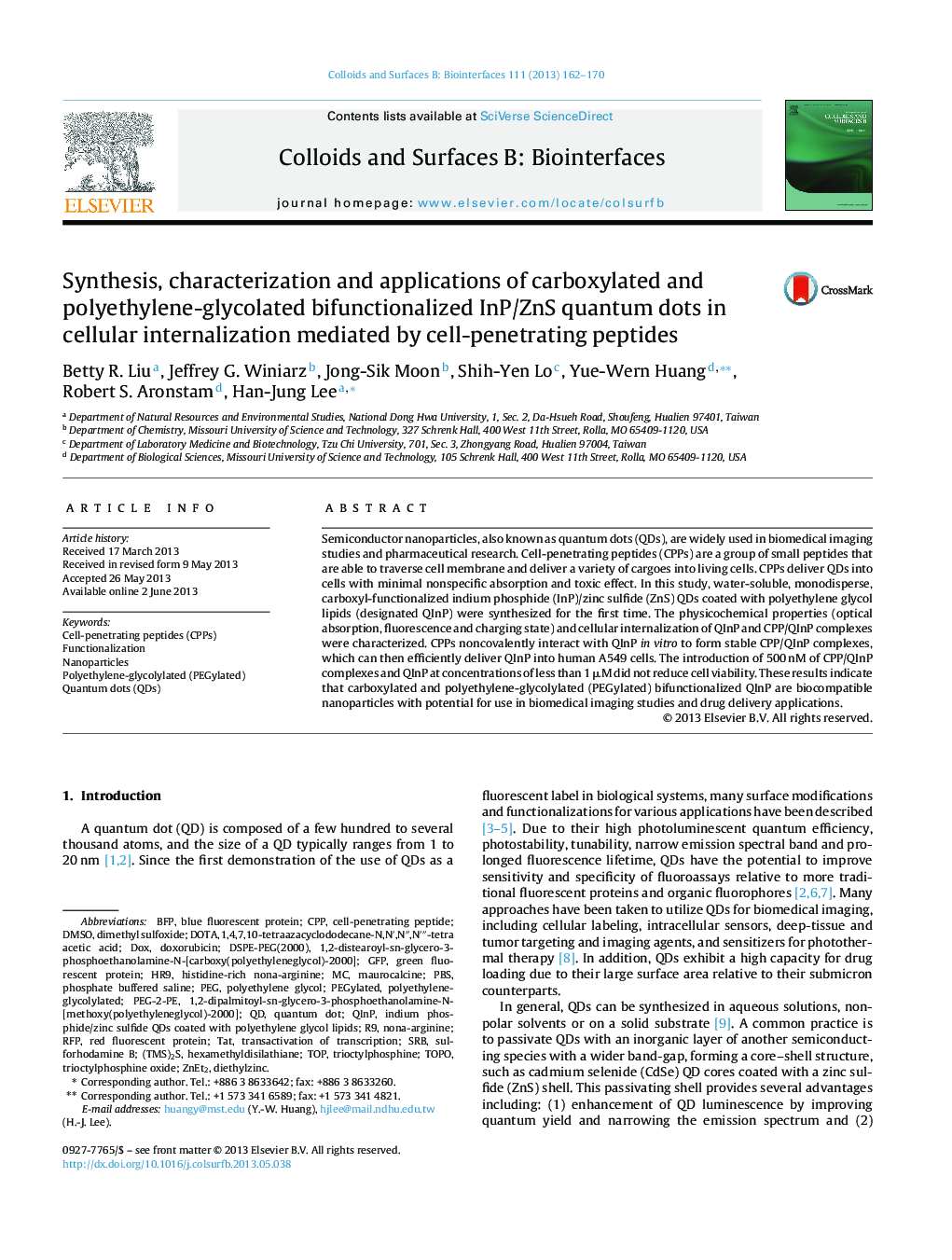| Article ID | Journal | Published Year | Pages | File Type |
|---|---|---|---|---|
| 599800 | Colloids and Surfaces B: Biointerfaces | 2013 | 9 Pages |
•We synthesized carboxylated and PEGylated bifunctionalized InP/ZnS QDs (QInP).•Cell-penetrating peptides (CPPs) could deliver QInP into human A549 cells.•Five hundred nM of CPP/QInP and QInP at or below 1 μM did not reduce cell viability.•QInP are biocompatible nanoparticles for use in biomedical applications.
Semiconductor nanoparticles, also known as quantum dots (QDs), are widely used in biomedical imaging studies and pharmaceutical research. Cell-penetrating peptides (CPPs) are a group of small peptides that are able to traverse cell membrane and deliver a variety of cargoes into living cells. CPPs deliver QDs into cells with minimal nonspecific absorption and toxic effect. In this study, water-soluble, monodisperse, carboxyl-functionalized indium phosphide (InP)/zinc sulfide (ZnS) QDs coated with polyethylene glycol lipids (designated QInP) were synthesized for the first time. The physicochemical properties (optical absorption, fluorescence and charging state) and cellular internalization of QInP and CPP/QInP complexes were characterized. CPPs noncovalently interact with QInP in vitro to form stable CPP/QInP complexes, which can then efficiently deliver QInP into human A549 cells. The introduction of 500 nM of CPP/QInP complexes and QInP at concentrations of less than 1 μM did not reduce cell viability. These results indicate that carboxylated and polyethylene-glycolylated (PEGylated) bifunctionalized QInP are biocompatible nanoparticles with potential for use in biomedical imaging studies and drug delivery applications.
Graphical abstractFigure optionsDownload full-size imageDownload as PowerPoint slide
